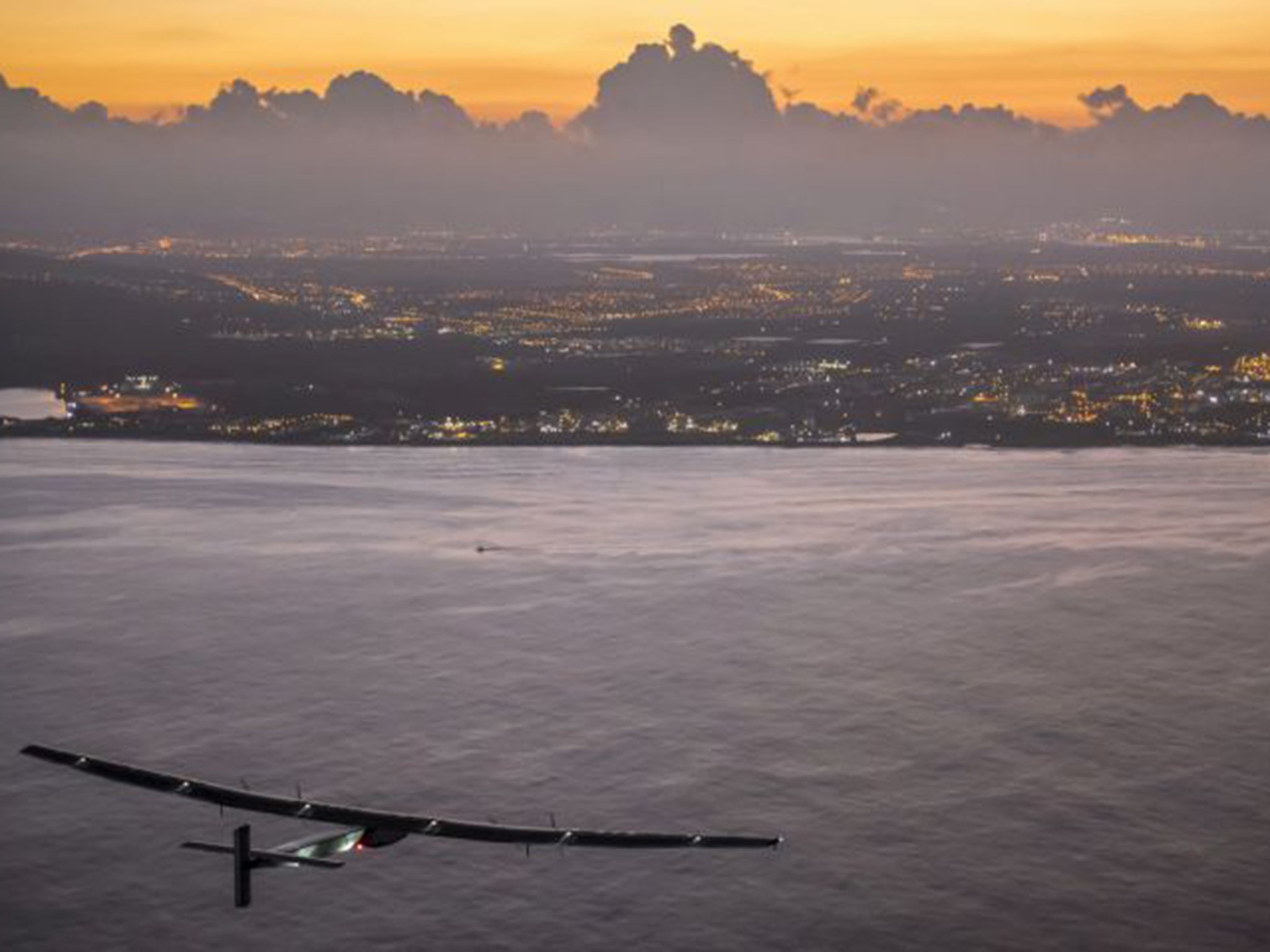Solar Impulse plane touches down in Hawaii after breaking non-stop solo record
The flight is the longest leg of a bid to raise awareness of clean technology

Your support helps us to tell the story
From reproductive rights to climate change to Big Tech, The Independent is on the ground when the story is developing. Whether it's investigating the financials of Elon Musk's pro-Trump PAC or producing our latest documentary, 'The A Word', which shines a light on the American women fighting for reproductive rights, we know how important it is to parse out the facts from the messaging.
At such a critical moment in US history, we need reporters on the ground. Your donation allows us to keep sending journalists to speak to both sides of the story.
The Independent is trusted by Americans across the entire political spectrum. And unlike many other quality news outlets, we choose not to lock Americans out of our reporting and analysis with paywalls. We believe quality journalism should be available to everyone, paid for by those who can afford it.
Your support makes all the difference.A solar powered plane has landed in Hawaii after a record-breaking flight across the Pacific.
The zero-fuel Solar Impulse 2 touched down after a gruelling four day and 22 hour flight from Nagoya in Japan, powered only by the solar panels on its vast wing span, having already broken distance and duration records for solar aviation.
One of the two Swiss pilots, Andre Borschberg, took the longest non-stop solo flight record, breaking the record set by the late US adventurer Steve Fossett, who flew around the world in 76 hours in a jet in 2006.
The flight is the longest leg of a round-the-world bid to raise awareness of clean technology and encourage governments to make the switch away from fossil fuels to a greener, low carbon future.
Borschberg, flying alone in the plane which has a 72 metre (236 ft) wing span covered in more than 17,000 solar cells, but only a tiny unpressurised cockpit, had to face "difficult" conditions as the plane made its way over the Pacific.
The team at mission control in Monaco were joined by supporter Prince Albert of Monaco for the landing and they and the team on the ground in Hawaii broke into applause as the plane touched down.
Before the landing Bertrand Piccard, chairman and pilot of Solar Impulse, said: "This is not just a historic first in aviation, it's a historic first in energy and it's a historic first in clean technology."
And he said: "Our airplane has not been built to carry passengers but to convey a message.
"Global implementation of clean technology similar to those which are used in Solar Impulse 2, would already today allow to divide by two the energy consumption and the CO2 emissions of our world, thanks to energy efficiency in ground mobility, buildings, industrial processes, as well as in lighting, cooling and heating systems.
"These solutions are profitable and would create jobs, revenue streams and support economical growth while also protecting the environment."
The flight in numbers
- It was in the air for around 120 hours, setting a new record for the longest solo-flight without refuelling, breaking the previous record of 76 hours and 45 minutes set in 2006.
- Entirely powered by the sun, the plane is covered by 17,000 photovoltaic solar cells. These provide energy for the plane's four propellers and recharge its batteries by day.
- It flies up to about 28,000 feet (8,534 metres) during the day to recharge its batteries.
- And it descends to under 10,000 feet (3,048 metres) at night to conserve energy
- It weighs just 2.3 tonnes, about the same as a car.
- It took 12 years to develop, design and build the plane, and 50 engineers and technicians worked on the project.
- The plane's ideal flight speed is about 28 miles per hour (45km), but it can travel at twice that speed during the day when the sun's rays are strongest
Press Association
Join our commenting forum
Join thought-provoking conversations, follow other Independent readers and see their replies
Comments